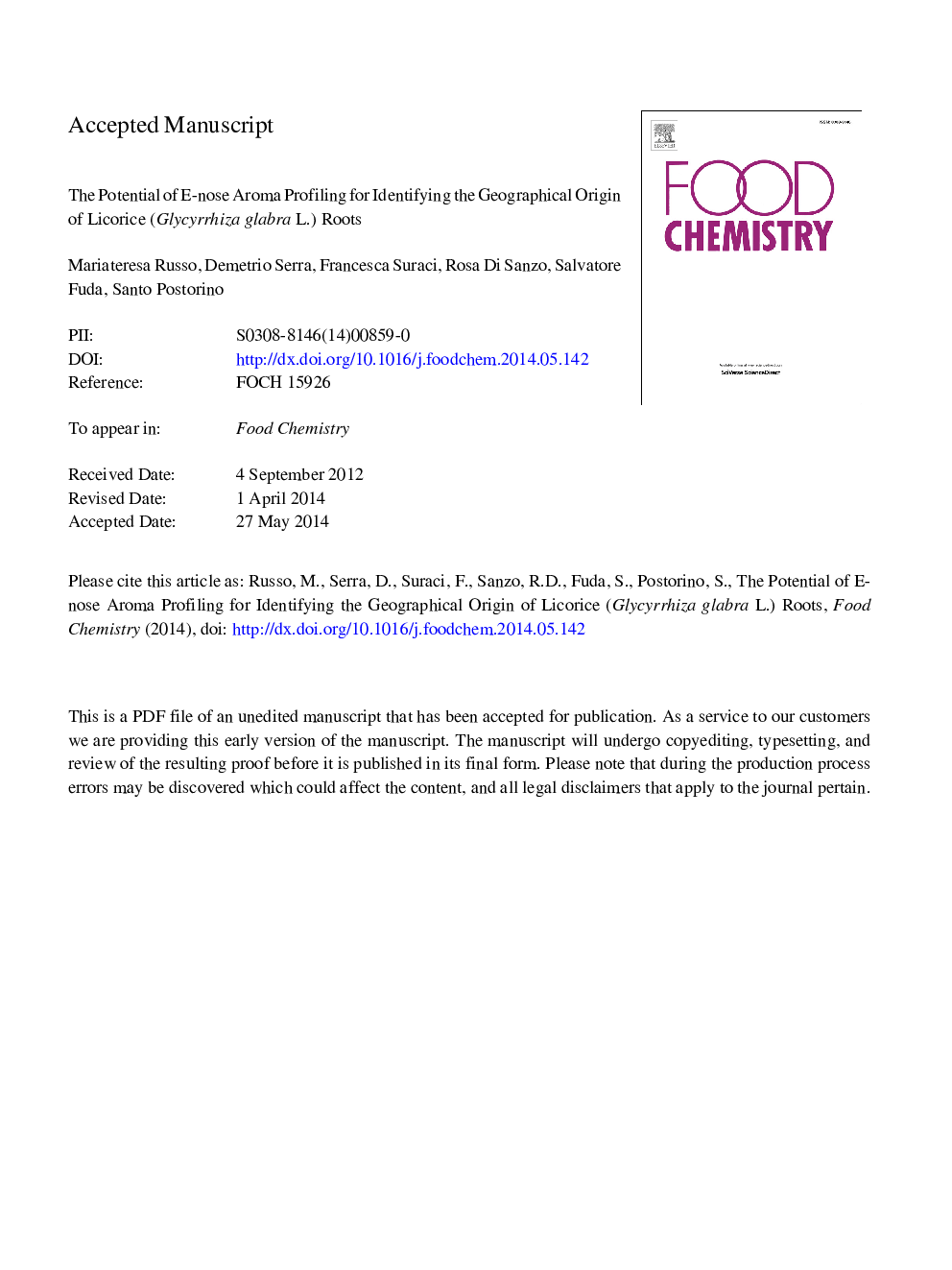| Article ID | Journal | Published Year | Pages | File Type |
|---|---|---|---|---|
| 7596236 | Food Chemistry | 2014 | 28 Pages |
Abstract
Licorice roots cultivated commercially in distinct geographical areas such as China, Iran, Italy (Abruzzo, Basilicata, Calabria and Sicily) and Turkey were classified using an artificial olfactive system (e-nose) based on metal oxide semiconductor sensors (MOS). The resultant instrumental data were processed using a multivariate statistical analysis method in order to classify the raw samples according to its origin. The e-nose odourprintings were obtained by a canonical discriminant analysis carried out with the aim of relating the specific data-sets corresponding to whole licorice roots aroma with the e-nose reference dataset. E-nose results were compared to those obtained by SPME/GC-MS. The HS-SPME/GC/MS analysis was used as a control system to check for the actual existence of differences in the chemical composition of sample headspace. These results imply the possibility to use an electronic nose as a tool for a quick, effective and non-destructive authentication of licorice roots.
Keywords
Related Topics
Physical Sciences and Engineering
Chemistry
Analytical Chemistry
Authors
Mariateresa Russo, Demetrio Serra, Francesca Suraci, Rosa Di Sanzo, Salvatore Fuda, Santo Postorino,
